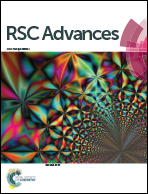Study on the blockage mechanism of carbon dioxide hydrate slurry and its microscopic particle characteristics
Abstract
In order to better understand the process of carbon dioxide hydrate formation and blockage, a series of experiments were performed in a high pressure hydrate experimental loop which has been constructed. The impacts of varying flow rate, pressure, and restarting of the pump on the plugging have been studied in this paper. The particle chord length distribution in the process of hydrate formation and blockage was monitored in real time by using the advanced device, Focused Beam Reflectance Measurement (FBRM). The results showed that the time taken for hydrate blockage to occur would significantly decrease at higher pressure, which meant higher pressure promoted the occurrence of hydrate blockage. At the same time, the time needed for carbon dioxide hydrate blockage increased with the flow rate. That is, the time for hydrate blockage increased when the flow rate changed from 754 kg h−1 to 1657 kg h−1. And once the pipeline has been blocked, restarting the pump may make the problem more serious. In addition, particle agglomeration led to a significant change in the particle chord length distribution during the process of hydrate formation and blockage, and the hydrate particle coalescence was the key cause of the hydrate plugging.



 Please wait while we load your content...
Please wait while we load your content...